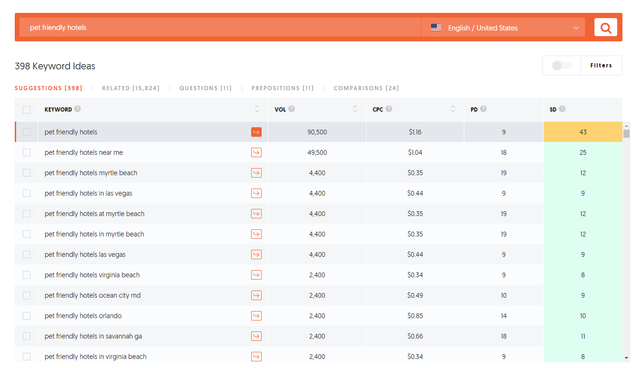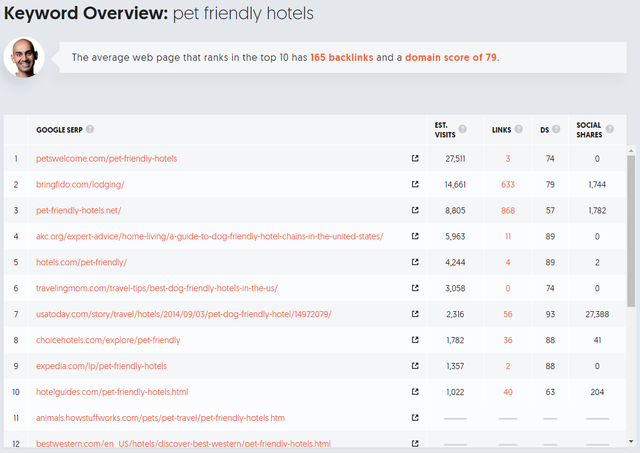How to Find the Right Keywords for Your Articles
When it comes to writing a good article there are two types of writers: the ones that research the keyword before writing the article and the ones that write the article and then try to find an appropriate keyword for it.
People that are new to article writing or blogging usually fall in the second category. I started the same years ago when keyword research was a “black hole” for me. When you think about it, keyword research tools were not that common and you had to use the limited resources that you had to find some good keywords that you might rank for.
While I cannot say which approach is better, I can share my experience and what I think works best for me. So, let’s get started.
What is keyword research and why should I care about it?
When you think about keywords, you primarily think about search terms that people use to find specific content on search engines, social media, hashtags, or any other form of content categorization. This helps search engines, as well as users, find a common language, and understand each other. Keywords help users find what they want easier and it helps search engines understand better what the user wants to find.
Ok, so with that out of the way, let’s get to the “why”.
Like any writer, you want your posts, articles, books, reviews, or any written piece that comes out of your hands to reach a certain audience, right? Of course! We all do.
That is where keywords come into play. They help you define the subject of your article. This way, people searching for that particular keyword are more likely to see your article as a result of search engines. Of course, things are a bit more complex and I’ll get into that in later articles about SEO.
For now, let’s focus on keyword research.

What is a good approach to keyword research?
There are many techniques for finding good keywords for your articles. Some work great for certain niches, while others don’t. It depends on several factors, how competitive that niche is, your research budget, and so on.
After trying several methods I found an “action” plan that I think works great for me and I will share it with you below.
Step 1: Find out the category your article falls into
This is the most important step because if you get this wrong, you won’t get the best results. For example, if you plan to write about keyword research, the main category would be SEO. If you plan to write about your vacation at the seaside, your main category would be travel.
Some articles might fall in two or more categories and you might have to think about the main ideas of your articles to see in which category it fits best.
Step 2: Select a subcategory for your article
This is similar to the first step, but it is a more in-depth analysis of what you plan to write about. As you know, each category is split into subcategories. For travel, for example, a subcategory could be day trips, solo travel, travelling with kids, travelling with pets, and so on.
The subcategory will help you get a starting point for the keyword research and the main points of your article.
Step 3: Finding the right keywords for your article
When it comes to finding the right keywords for your post, there are different scenarios that I stumbled upon. The first scenario is having your own blog, with your own domain or free subdomain (WordPress, Blogger, HubPages, etc.). The second scenario is writing on article sites such as Medium or other established websites.
Writing on your own blog
If you are starting your own blog or already have one but it’s in its early stages, you have to look for keywords that are easy to rank on Google and other search engines. For the purpose of this article, we will use Google for data comparison.
Owning your own blog can make it more difficult for users to find your article as Google ranks websites by several factors (that I will get into in future SEO articles), some of the factors are your domain authority, domain age, content, links to your blog (backlinks) and more.
Considering those factors, you should choose keywords that are lower in competition and have lower SEO difficulty, so you have a fair chance of showing up in the search results. This applies to newer blogs and websites since established and older websites already have some authority, backlinks, and content.
So, where do you get the data regarding keywords, SEO difficulty, content length, and so on?
There are several great tools available on the web. Some are cheaper, some are more expensive. Most of them have free or paid trials, so you can test each of them out.
One of the best tools is aHrefs, but it is also a pricey choice. It is certainly worth the price but might be a bit on the expensive side if you are just starting out or use it for periodical writing.
Other great tools are SEMrush, Longtail Pro, and Ubersuggest.
Personally, I use Ubersuggest as it has a free plan that is enough to get you started and has some good tools that you can use. It is not as complex as the other tools I mentioned above, but it will get the job done.
So, with your article subcategory in mind, think about things related to your article that falls in that subcategory. For example, if your subcategory is travelling with pets, a good keyword research starting point would be pet-friendly hotels.

As you can see, the keyword pet-friendly hotels have around 90,500 searches per month and an SEO Difficulty (SD column) of 43. If you are just starting your blog or don’t have much content or backlinks, you should aim for keywords that have an SEO Difficulty below 10. This will increase your chances of showing up in the search results.
Another thing you can see in the image above is that the more specific your keyword is, the lower the SEO difficulty is and the higher your chances are to rank well for that specific keyword.

For each keyword, Ubersuggest shows you an average value for backlinks and domain score needed to rank on the first page for that search (top 10). As you can see, for pet-friendly hotels, you need about 165 backlinks and a domain score of 79 or above to rank in the top 10 results. Of course, these numbers are not 100% accurate, they are averages based on the top 10 results.
Another important feature of Ubersuggest is the table showing the first results for your keyword analysis. As you can see, the website ranking first gets roughly 30% (27,500) of the users performing the search. The second place gets roughly 16% (14,611), while sites ranking in third place and lower get below 10% of all the visits.
So, your goal is to rank in the top 3 if possible, to maximize the exposure of your article. This is the main reason why you should choose less competitive keywords or even long-tail keywords.
Writing for an established website like Medium
When it comes to writing for an established website like Medium, some of the ranking factors are already achieved. A website like Medium has lots of backlinks, many unique and well-written articles, social shares (signals), and a high domain score.
This is perfect for content creators as they can aim for higher traffic (higher interest, broader audience) keywords. The keyword research process remains the same, but you can focus on higher SEO difficulty keywords with more traffic and more searches because you have a great established website doing the SEO heavy lifting.
Conclusions
To sum things up, whenever you think about an article, decide who you want it to be read by. Define your audience, decide on the platform (own or established), select the category and subcategory your article falls into, and search for keywords that you are able to rank for, depending on your scenario.
These are the steps I take when writing articles or any content on my blog. It is a tedious process but if you choose your keywords right, the results (and readers) will show up a lot faster. Unfortunately, with so many blogs and blogging platforms, it is not enough to have great and well-written content, you have to bring it in front of people too.
Don’t forget, awesome content means nothing if no one sees it.
I hope this article will help you. I just started posting on Medium and in my future articles, I will focus on other SEO, blogging techniques, processes, and tools I use for my websites and content creation.


